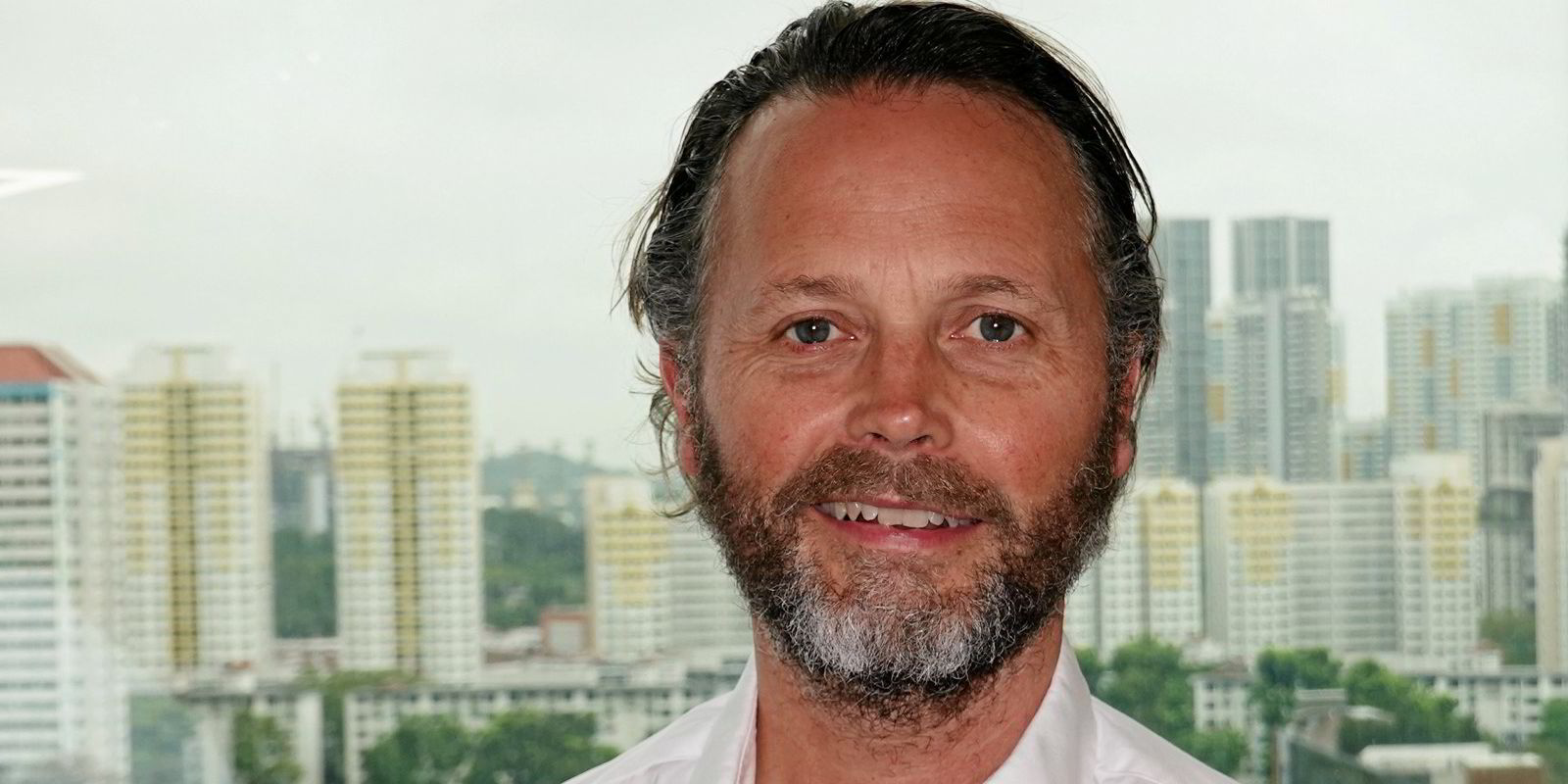Lysaker-based Wilh Wilhelmsen Holdings has made extensive investments in Norwegian maritime-related technology companies. Chief executive Thomas Wilhelmsen says technology developments in Asia are firmly on the company’s radar.
“My impression is that Asia is quite on the ball, but it is not an issue of ‘Asia’,” Wilhelmsen said in an exclusive interview with TradeWinds. “We are running an international business, so we need to make sure we get the best out of both worlds.”
He said the Wilhelmsen group has two main areas where it is looking at new technologies — Norway and Singapore.
“Of course, we are not disregarding all the other places,” he said. “We have as much to learn in Europe as we have in Singapore or elsewhere.
“If we as an industry are going to progress as fast as we want to, I think the key to this is that we’re able to work across countries or regions or even companies.”
Wilhelmsen added that he has been impressed at the willingness of different companies to work together to solve some of the issues facing the shipping industry.
“We are seeing the advantage of actually working across various industries or within the industry or across borders to develop solutions that will benefit the world at large, not just the single companies on competitive advantage,” he said.
Having moved out of shipowning, the Wilhelmsen group’s core business activities revolve around ship management and port and ship services.
In recent years it has been building up a sizeable investment portfolio of technology-focused companies ranging from autonomous and zero-emission vessels to digital and software companies, along with companies zeroed in on the development of what it terms as “new energy”.
The Wilhelmsen group owns some of these outright, has investment stakes in others and some are structured as partnerships with technology providers.
Asked to comment on the investment criteria it uses to select technology-related companies, Wilhelmsen said there were two main priority areas.
“We are looking at technologies that we can utilise and implement in order to improve our offering towards the industry, and technologies that are contributing to the zero-emission journey,” he said.
“Of course, beyond that, there are a lot of other technologies, but I think those are the two major factors for us, and how can we find technologies or solutions that we can commercialise using the wider Wilhelmsen group.”
Wilhelmsen said the reason for the predominance in mainly Norwegian technology investments was purely down to proximity.
“Norway is closer to some of the development resources,” he said.
“And many of these companies are in a very, very early stage. We believe that we need to have our feelers out there in order to know what’s going on.”
Keeping eye on Asia
Despite a strong investment in Norwegian technology companies, the Wilhelmsen group is not keeping all of its eggs in Norway.
In Singapore, where the company’s ship management arm is based, it is an investor in Motion Ventures, a consortium-driven venture-capital fund that makes strategic investments and offers tailored support to early stage start-ups tackling challenges in the maritime value chain.
The fund offers start-ups “unprecedented access” to key maritime firms through its consortium of corporate investors, which includes shipowners Mitsui OSK Lines, IMC and Signal Maritime.
Based on information provided on its website, it has so far invested in 11 digital and artificial intelligence-based platforms and projects.
The Wilhelmsen group also participates in Pier71, a Singapore-based public and private-led maritime innovation ecosystem that designs and delivers programmes to uncover opportunities within the maritime industry. It does so by bringing together a community of stakeholders who are keen to digitalise and create the next wave of maritime innovation.
In April, the company joined up with several other shipping and technology heavyweights in the Hafnia-led Studio 30 50, an initiative whose objective is to identify and incubate new solutions aimed at lowering emissions in 2030 and achieving net zero emissions in 2050.
‘Perfect fit’
“In Singapore, there is a lot of innovation going on within the technology space where we can be a perfect [fit] in this part of the world,” Wilhelmsen said.
“There is a lot of governmental backing of these initiatives, which of course is important. You do need private backing or the governmental backing, and that is definitely happening in Singapore,” he added.



